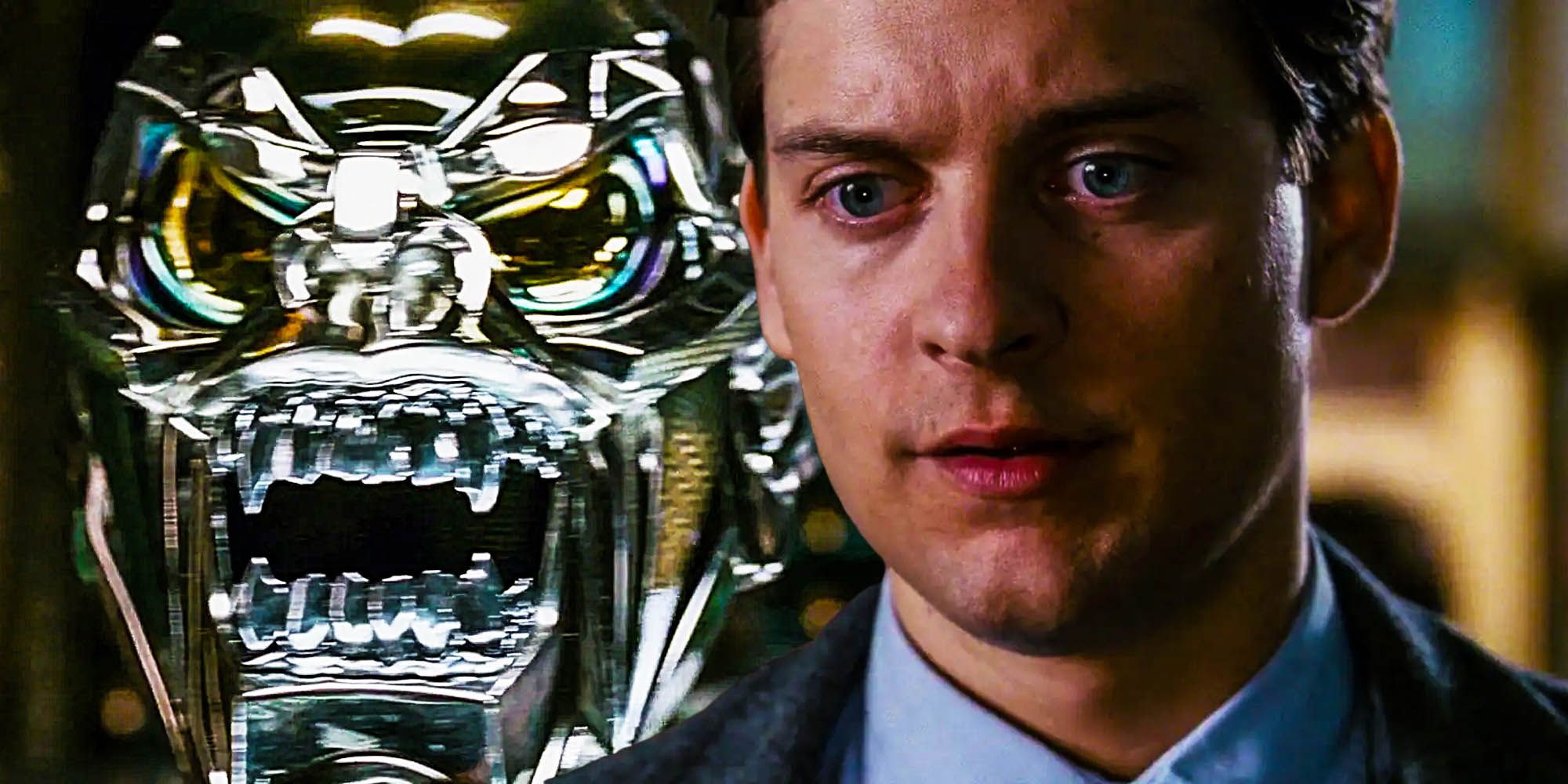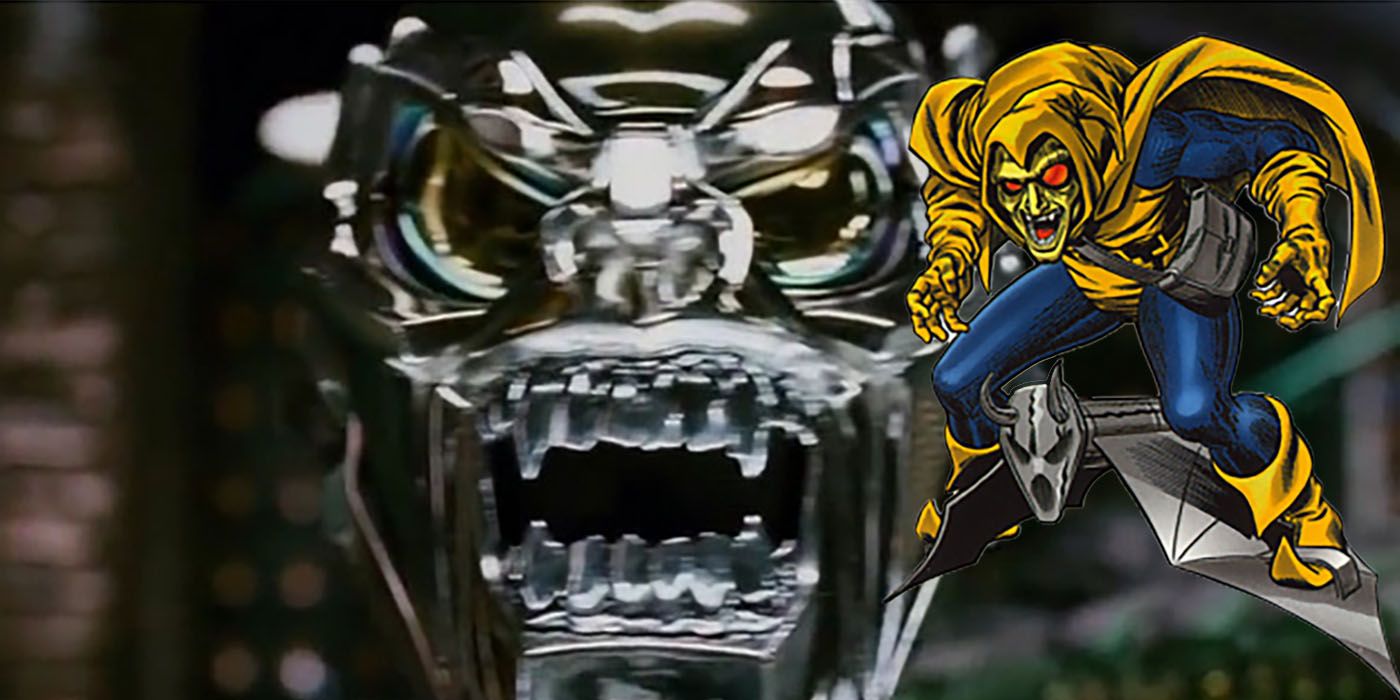
The Sam Raimi Spider-Man films were filled with Easter eggs, including a reference to The Hobgoblin in Spider-Man 3 which allowed for his potential introduction in a future installment. Raimi’s Spider-Man trilogy is celebrated for its seamless combination of comic accuracy and heartfelt, realistically-written characters, but one occasionally overlooked aspect of the films is that it’s firmly set in a populated Marvel universe, with references to Spider-Man stories and characters in the films and even some shoutouts to other Marvel characters in the Raimi continuity’s non-movie material. One such reference was to The Hobgoblin, one of Spider-Man’s most prominent adversaries for years in the comics. A Raimi iteration of The Hobgoblin’s mask can be found in act 1 of Spider-Man 3.
The Hobgoblin, aka Roderick Kingsley, was a major Spider-Man villain for years in Marvel’s comics. Upon discovering one of the seemingly deceased Norman Osborn’s hidden stashes of the Green Goblin's (played by Willem Dafoe) gear, Kingsley, a corrupt corporate executive, modified Osborn’s formula to eliminate its insanity side effect and increase its physical enhancements. With a modified costume, Kingsley became The Hobgoblin. Although he was stronger than Norman, Kingsley’s lack of insanity made him an overall less dangerous adversary than the unpredictable Norman. Like the Green Goblin, the comics made the Hobgoblin’s true identity a running mystery, with several red herrings and fake reveals, explained by Kingsley brainwashing people like Ned Leeds into becoming body doubles. The Hobgoblin’s true identity was definitively revealed in 1997’s Spider-Man: Hobgoblin Lives.
Roderick’s Hobgoblin outfit was a modified version of Norman’s Green Goblin costume. Kingsley changed the color palette, including giving the mask a gold hue, and added an orange cloak, but retained the chainmail armor and legendary aesthetic that original Green Goblin Norman Osborn used first. In Spider-Man 3, Harry Osborn similarly creates a new outfit and uses improved technology. Calling himself the New Goblin (though the name is never said in the film), Harry takes Norman’s Goblin formula, granting him superhuman physical abilities but damaging his psyche in the process. Early in the film, Harry’s new technology is shown, along with a distinctive mask in between Norman’s Green Goblin mask and Harry’s New Goblin mask. This third mask resembles Norman’s, but is far more angular and aggressive, with notably sharper teeth. The mask is also a metallic gold color, indicating that it’s the Raimi universe’s Hobgoblin mask.

With both Norman and Harry dead by the end of the Spider-Man trilogy (though Norman could have easily been resurrected just as he was in the comics), a future installment in Raimi’s continuity could have had a new version of Roderick Kingsley's Hobgoblin. As a business tycoon, Kingsley could have acquired Norman Osborn’s assets or simply bought his Tudor City penthouse and discovered the Goblin lair. Like his comic counterpart, Kingsley would take the gear, somehow modify the formula, and become New York’s latest threat, motivated by greed and thirst for power, unlike Norman’s unbridled sadism and obsessions and Harry’s need for revenge.
This wouldn’t be the first time that the Raimi Spider-Man series referenced a character from the Spider-Man comics. The 2002 film subtly mentioned Eddie Brock and Curt Connors, both of whom went on to appear in sequels. The Marvel superhero and sorcerer Doctor Strange is mentioned by name in Spider-Man 2, an unintentionally fitting joke, considering the Raimi universe’s upcoming MCU appearance, thanks to Strange. The Raimi Spider-Man video games, which can easily be considered canon to the Raimi timeline, reference Latveria (Doctor Doom’s home country), Captain America, and The Punisher, and include an appearance by The Kingpin, Daredevil’s nemesis.
Had Sam Raimi’s Spider-Man continuity continued, it would not be surprising to see his take on Roderick Kingsley appear and menace Spider-Man as the Hobgoblin. Considering Raimi’s appreciation and understanding of the comic source material, it’d make sense to have Kingsley succeed Norman and Harry, and perhaps end up fighting the resurrected Norman as he did in the comics. Either way, Spider-Man 3’s Hobgoblin mask Easter egg was setting up a future with at least one more Goblin-themed supervillain.
from ScreenRant - Feed https://ift.tt/3lJL2iE https://ift.tt/2YWV33z
from TechCrunch https://ift.tt/3DIU7yv
via IFTTT
Comments
Post a Comment